Transnistria, a self-proclaimed republic nestled between Moldova and Ukraine, offers a captivating glimpse into the bygone era of Soviet influence. Visitors to this intriguing region can’t help but be captivated by its architectural marvels, where grand structures like the Presidential Palace and the Palace of the Soviets stand as monuments to the communist past. Beyond the iconic landmarks, Transnistria’s distinct cultural identity is woven into its local cuisine, blending traditional Moldovan flavors with a touch of Soviet-era nostalgia. Unraveling the region’s complex political landscape and its contested statehood only adds to the allure of this unique destination, inviting travelers to delve deeper into its enigmatic sights and retro ambiance.
Key Points
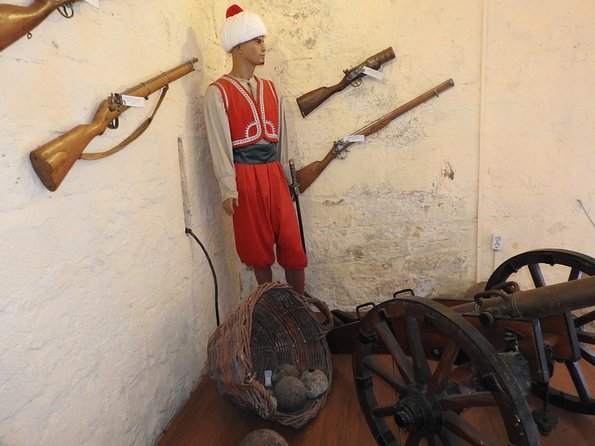
-
Transnistria’s Soviet-inspired architecture, including the Palace of the Soviets and utilitarian apartment blocks, serves as a time capsule of communist-era ideology and aesthetics.
-
The region’s monuments, like the Nesterov Obelisk and Tiraspol Kremlin, reflect the authoritarian nature of the Soviet regime and its military significance.
-
Iconic landmarks, such as the Presidential Palace and Orthodox cathedrals, showcase the blend of traditional and Soviet influences in Transnistria’s cultural landscape.
-
Engaging with local cuisine, outdoor markets, and cultural activities provides insights into the Soviet-influenced heritage of Transnistria.
-
Transnistria’s political complexity, with its self-declared republic status and reliance on Russian support, contributes to the region’s unique character and identity.
Exploring Transnistria’s Architectural Legacy
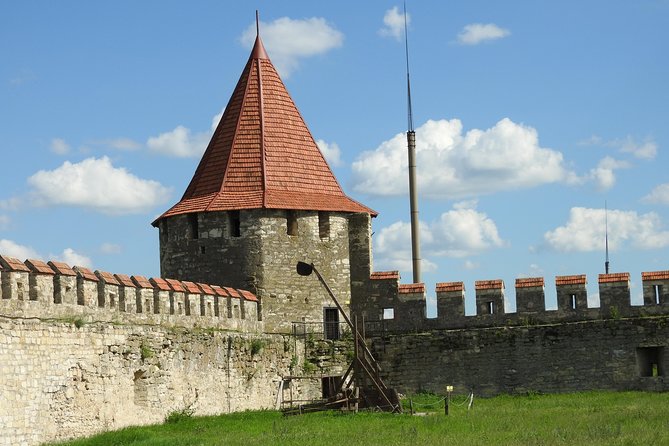
As you explore the Soviet-inspired architecture in Transnistria, you’ll be struck by the region’s unwavering commitment to preserving its communist-era legacy.
From the monumental Palace of the Soviets to the utilitarian apartment blocks, the buildings in Transnistria reflect the ideology and aesthetics of the Soviet Union. This architectural landscape serves as a time capsule, offering visitors a glimpse into the past.
The intricate mosaics, grandiose sculptures, and imposing facades exemplify the socialist realist style, which aimed to glorify the proletariat and the state.
Navigating these streets is akin to stepping back in time, allowing you to learn about Transnistria’s unique cultural heritage.
You can also read our reviews of more tours and experiences in Chisinau.
Discovering Tiraspol’s Soviet-Era Monuments
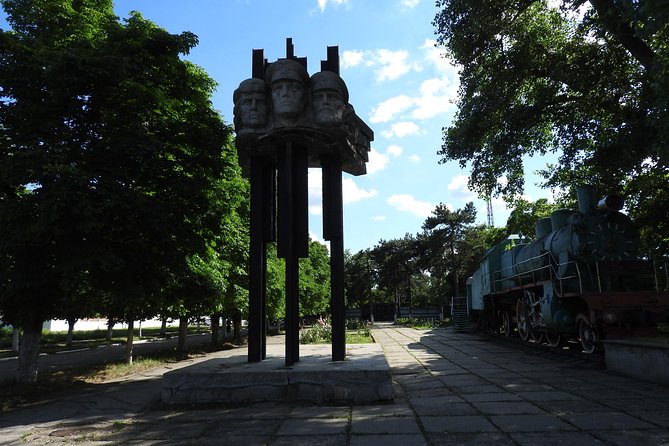
Visitors exploring Tiraspol, the capital of Transnistria, will encounter an array of Soviet-era monuments that stand as reminders of the region’s communist past.
These architectural relics offer a glimpse into the region’s history and ideology:
-
The Nesterov Obelisk, a towering monument honoring the Soviet military, dominates the city’s central square.
-
The Tiraspol Kremlin, a fortified complex housing government offices, reflects the authoritarian nature of the former Soviet regime.
-
The Kvint Factory, a renowned distillery, showcases the industrial might celebrated by the communist system.
-
The Suvorov Military School, a prestigious educational institution, underscores the importance of military prowess in the Soviet worldview.
Visiting Transnistria’s Iconic Landmarks
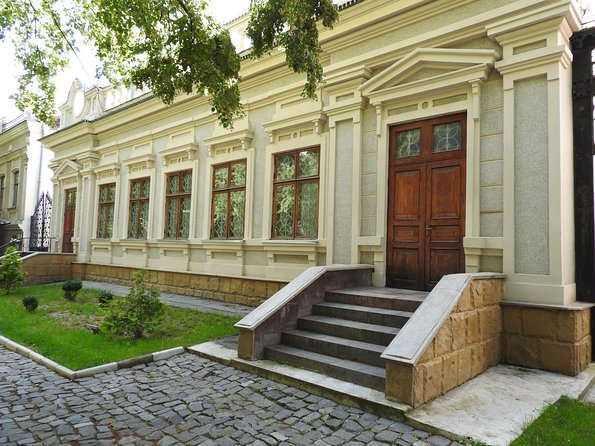
Beyond the Soviet-era monuments that captivate visitors, Transnistria’s iconic landmarks offer a deeper exploration of the region’s unique heritage.
The Presidential Palace in Tiraspol, with its grand neoclassical architecture, stands as a testament to the country’s political identity.
The Bender Fortress, a historic stronghold dating back to the 15th century, showcases the strategic importance of this border region.
Visitors can also marvel at the striking Orthodox cathedrals, like the Cathedral of the Nativity, which blend traditional design with Soviet influence.
These landmarks provide a window into Transnistria’s complex past, allowing travelers to enjoy the region’s distinct culture and identity.
Experiencing the Local Cuisine and Culture
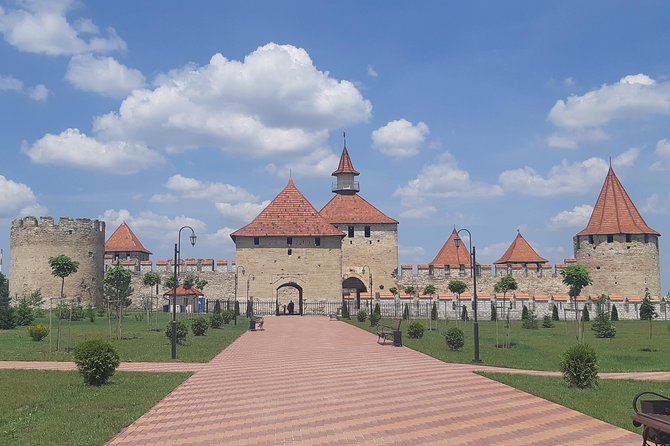
Transnistria’s local cuisine and culture offer travelers a unique opportunity to delve deeper into the region’s Soviet-influenced heritage. From hearty borscht to traditional Moldovan wine, the local fare reflects the rustic charm and resilience of the Transnistrian people.
Visitors can explore bustling outdoor markets, where vendors sell fresh produce, homemade preserves, and artisanal crafts. Beyond the culinary experience, the region’s cultural landscape is dotted with Soviet-era monuments, museums, and theatres, showcasing the enduring influence of the USSR.
Amidst the nostalgic atmosphere, travellers can engage with local residents, gaining insights into the daily lives and perspectives of those who call Transnistria home.
- Savour traditional Moldovan cuisine, including borscht, sarmale, and Transnistrian wines
- Browse vibrant outdoor markets for locally-sourced produce, preserves, and handmade goods
- Discover Soviet-era monuments, museums, and cultural institutions
- Engage with locals to learn about life in this unique, self-declared republic
As one navigates the political landscape of Transnistria, they’ll encounter a self-declared republic that operates in a state of limbo.
Transnistria seceded from Moldova in 1990 but isn’t recognized internationally as an independent state. It maintains its own government, currency, and military, yet relies on Russian economic and political support.
Visitors must obtain a special permit to enter, and the region’s unique status can create administrative challenges.
However, this political complexity also contributes to Transnistria’s distinctive character, offering travelers a glimpse into a largely isolated Soviet-influenced territory that continues to chart its own course.
Transnistria’s Enigmatic Sights and Attractions
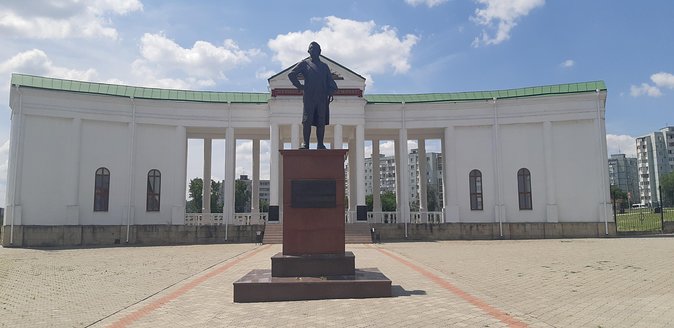
Amidst Transnistria’s political complexities, the region’s sights and attractions offer visitors a captivating glimpse into its Soviet-influenced heritage.
Visitors can explore:
-
The iconic Tiraspol Sheriff Stadium, a relic of the Soviet sports culture, where local football matches are held with fervor.
-
The Bendery Fortress, a sprawling citadel that has witnessed centuries of conflict and now serves as a museum showcasing the region’s turbulent past.
-
The Noul Neamt Monastery, a stunning 19th-century Orthodox Christian complex that blends traditional architecture with Soviet-era influences.
-
The colorful Lenin Square in Tiraspol, where a towering statue of the revolutionary leader stands, a symbol of Transnistria’s continued reverence for its communist roots.
Taking in Transnistria’s Retro Ambiance
Stepping into Transnistria’s retro ambiance, visitors are immediately immersed in a time capsule that transports them back to the Soviet era.
Crumbling buildings, hammer-and-sickle emblems, and the ubiquitous presence of Lenin statues create a powerful sense of nostalgia and historical significance.
Exploring the streets, one encounters the iconic Trabant cars, relics of the Eastern Bloc, alongside the sound of Russian pop music echoing from local shops.
The overall experience evokes a palpable connection to Transnistria’s Soviet past, allowing travelers to witness firsthand the region’s unwavering dedication to preserving its unique cultural identity.
This immersive retro atmosphere offers a fascinating glimpse into a world that, for many, has long since vanished.
Understanding Transnistria’s Contested Statehood
Beneath Transnistria’s retro veneer lies a complex and contested statehood. Recognized as an autonomous region within Moldova, Transnistria has effectively operated as a breakaway state since the early 1990s, supported by Russia but not recognized internationally.
This unresolved conflict has profound implications:
-
Transnistria maintains its own government, military, and currency, existing in a legal and political limbo.
-
The region’s economy relies heavily on Russian subsidies, making it economically dependent on Moscow.
-
Tensions between Transnistria and Moldova remain high, with periodic border disputes and political tensions.
-
The ambiguity of Transnistria’s status creates challenges for residents, businesses, and travelers, navigating a unique geopolitical landscape.
Frequently Asked Questions
How Do I Obtain a Visa for Transnistria?
Visitors to Transnistria can obtain a visa upon arrival at the border. They’ll need a valid passport and may need to pay a fee. It’s recommended to check the latest visa requirements before travel.
Is It Safe to Visit Transnistria as a Solo Traveler?
It’s generally safe for solo travelers to visit Transnistria, though some caution is advised due to its political status. The guided tour provides a secure and informative experience to explore this unique region.
Can I Exchange My Currency for Transnistrian Rubles?
Yes, you can exchange your currency for Transnistrian rubles. Most banks and exchange offices in Transnistria accept foreign currency and allow you to convert it to the local currency, which is needed for purchases within the region.
What Is the Best Way to Communicate With Locals in Transnistria?
The best way to communicate with locals in Transnistria is to learn some basic Russian phrases. Many residents speak Russian, so having a phrasebook or translation app can be helpful. Alternatively, booking a private tour with a local guide can facilitate easier communication.
Are There Any Restrictions on What I Can Bring Into Transnistria?
There are generally no major restrictions on what you can bring into Transnistria. However, it’s recommended to avoid bringing in large amounts of cash or valuables and to check with your tour operator for any specific guidelines.
The Sum Up
Transnistria’s Soviet-inspired architecture and monuments offer a unique glimpse into the region’s turbulent past, while its local cuisine and cultural traditions reflect the resilience of its people. Despite its contested political status, the territory’s captivating sights and enigmatic atmosphere make it a distinctive destination for those seeking to explore the legacy of the Soviet era.
More Tour Reviews in Chisinau
- Chisinau Walking Tour with Local Guide
- From Moldova: Tour to Cricova Winery with wine tasting
- Chisinau: Cricova Wine tour &Old Orhei Archeological Complex
- Chisinau: City Tour and Cojusna Winery with Tasting
- Chisinau: Cocktail Bar & Pub Crawl and Wine Bars
- From Chisinau: Old Orhei complex and Cricova Wine Tasting
Not for you? Here's more nearby things to do in Chisinau we have reviewed
- Chisinau Walking Tour with Local Guide
- From Moldova: Tour to Cricova Winery with wine tasting
- Chisinau: Cricova Wine tour &Old Orhei Archeological Complex
- Chisinau: City Tour and Cojusna Winery with Tasting
- Chisinau: Cocktail Bar & Pub Crawl and Wine Bars
- From Chisinau: Old Orhei complex and Cricova Wine Tasting
- Moldova: Wine tour to Miletii Mici cellar with Tasting
- From Iai: Mimi Castle Wine Tasting Day Trip
- Transnistria Tour from Chisinau Explore Soviet Time Capsule
- Gagauzia: day tour in Gagauzia and Manuc Bei Mansion
- Chisinau: City Highlights Walking Tour with Local Guide
- From Chiinu to Odesa: A Tasty Day Trip!
